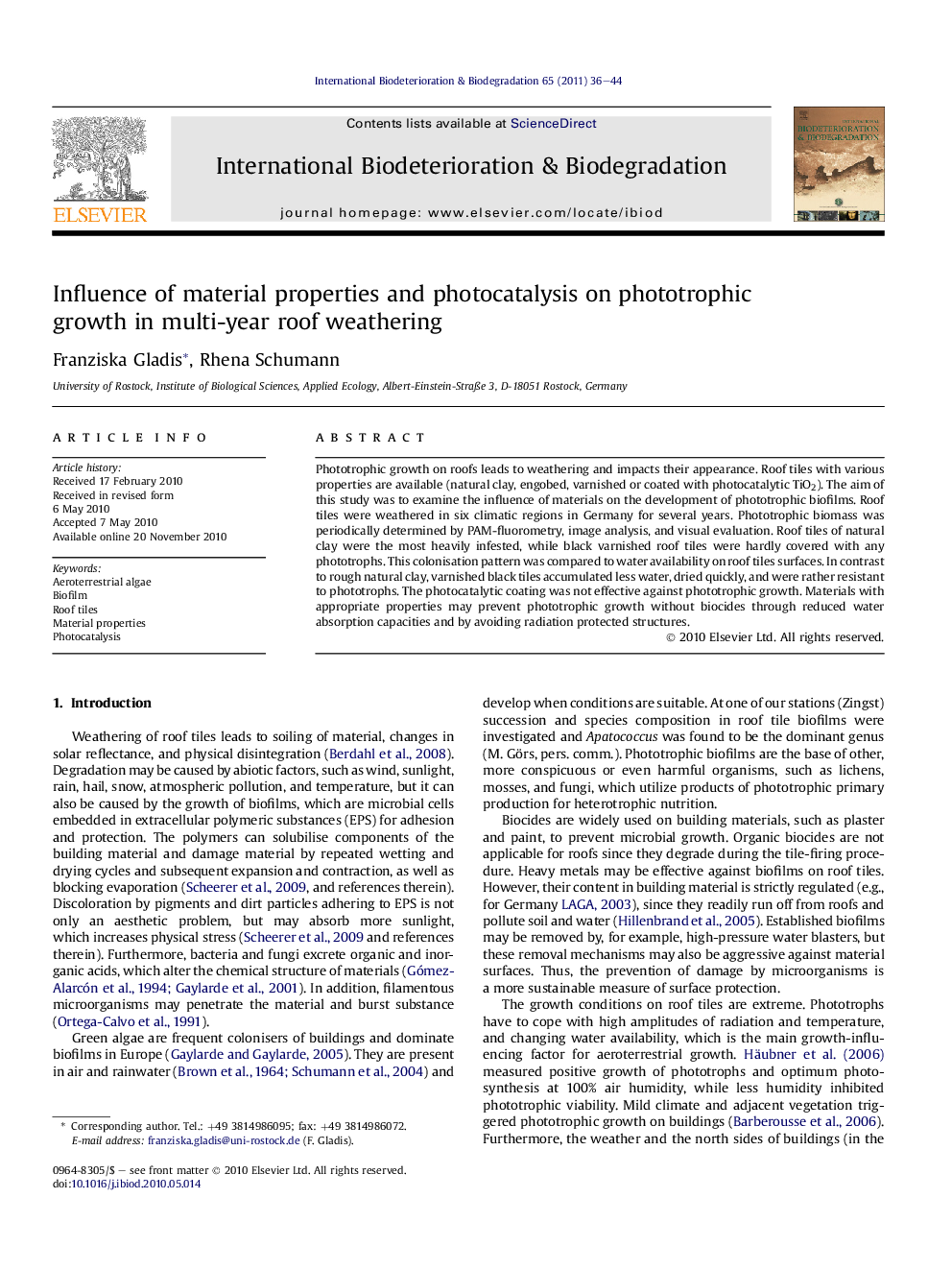| Article ID | Journal | Published Year | Pages | File Type |
|---|---|---|---|---|
| 6289559 | International Biodeterioration & Biodegradation | 2011 | 9 Pages |
Abstract
Phototrophic growth on roofs leads to weathering and impacts their appearance. Roof tiles with various properties are available (natural clay, engobed, varnished or coated with photocatalytic TiO2). The aim of this study was to examine the influence of materials on the development of phototrophic biofilms. Roof tiles were weathered in six climatic regions in Germany for several years. Phototrophic biomass was periodically determined by PAM-fluorometry, image analysis, and visual evaluation. Roof tiles of natural clay were the most heavily infested, while black varnished roof tiles were hardly covered with any phototrophs. This colonisation pattern was compared to water availability on roof tiles surfaces. In contrast to rough natural clay, varnished black tiles accumulated less water, dried quickly, and were rather resistant to phototrophs. The photocatalytic coating was not effective against phototrophic growth. Materials with appropriate properties may prevent phototrophic growth without biocides through reduced water absorption capacities and by avoiding radiation protected structures.
Related Topics
Life Sciences
Environmental Science
Environmental Science (General)
Authors
Franziska Gladis, Rhena Schumann,
